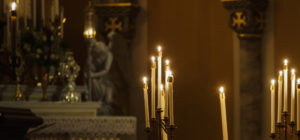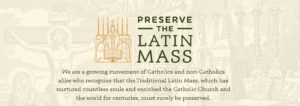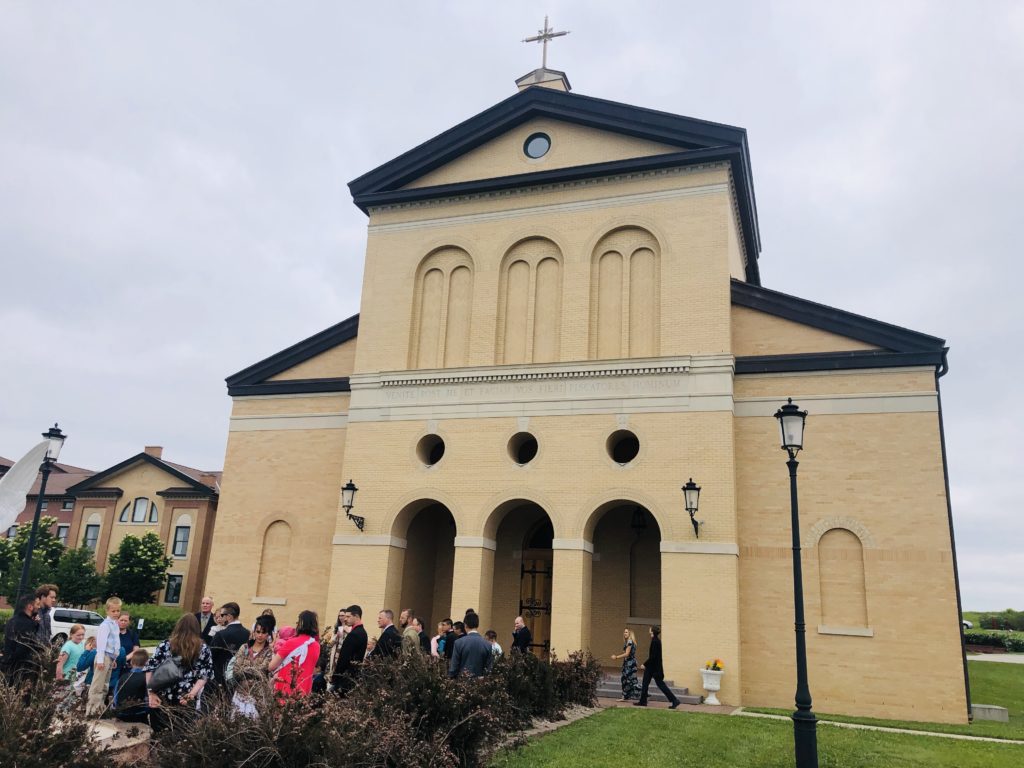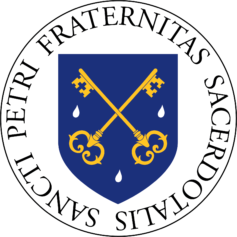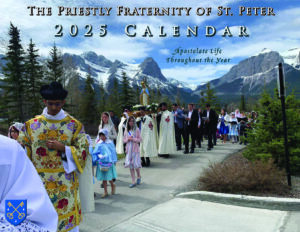Consecration of Russia and Ukraine to the Immaculate Heart of Mary
The Apostolic Nuncio of the United States has sent an urgent communique to the nation’s Bishops, informing them that the Holy Father is inviting each bishop to join him in an Act of Consecration of Russia and Ukraine to the Immaculate Heart of Mary on the Feast of the Annunciation, Friday, March 25th . The consecration will take place at 5:00 PM Rome time. Pope Francis is also sending a Cardinal to represent him and lead the consecration in Fatima, Portugal.
The Holy Father clearly has in mind Our Lady of Fatima’s words and request those many decades ago.
While the scourge of war wages on this earth, we know it is not unconnected to a larger, cosmic battle between good and evil. The forces of hell will no doubt try to prevent this consecration from occurring as God desires.
We encourage all the friends of the FSSP to unite your prayers and sacrifices to this intention, that the consecration be made according to God’s holy will and draw down immense graces for Russia, Ukraine, and the entire world.
We also remind you of Our Lady of Fatima’s request to do penance, to pray the Rosary, and to make the Five First Saturdays: https://fssp.com/a-short-history-of-the-first-saturday-devotions/
March 18, 2022

Carry the Cross: Mission Tradition
Many of us remember the days when, as Catholic school kids, Lent was a time to donate our spare change to worthwhile causes. And that was very appropriate in this penitential season as we deny ourselves and accompany our Lord on the road to Calvary.
Sadly, some of our old favorite charities seem to have lost their focus. Some have even gotten involved in tangential issues that seem more motivated by political fashion than true Christian caritas.
 This Lent, the FSSP’s own Mission Tradition is giving all of us a special opportunity to Help Carry the Cross. Like Simon of Cyrene, we can shoulder some of the burdens of our FSSP family not only here but also around the world, confident in Our Lord’s words that “as long as you did it to one of these my least brethren, you did it to me.”
This Lent, the FSSP’s own Mission Tradition is giving all of us a special opportunity to Help Carry the Cross. Like Simon of Cyrene, we can shoulder some of the burdens of our FSSP family not only here but also around the world, confident in Our Lord’s words that “as long as you did it to one of these my least brethren, you did it to me.”
Throughout the season Mission Tradition is featuring special blog posts, photos, and updates from our missionary priests in Mexico, Colombia, and Nigeria. There you can learn about Fr. Heenan’s work preserving the Latin Mass in Guadalajara. You’ll hear Fr. Valenzuela’s account of his arrival at the Colombia mission and school. And we’ll hear from Fr. Van der Putten in Nigeria about building a church and working the farm that surrounds it.
If you feel called to give to Mission Tradition, know that the money will go directly to our poorest apostolates. Our missionary priests have to regularly deal with food availability, basic education, shelter, medical hardships, and other issues that we don’t see as much in the U.S. and Canada. But the spiritual battle is the same–to advance the Kingdom of God on earth with every weapon that the Church’s traditions give us, particularly the ancient but ever-new Holy Sacrifice of the Mass.
We encourage you to visit Mission Tradition’s website and experience how the love of the ancient liturgy and the love of neighbor so harmoniously fuse in the FSSP’s mission apostolates.
It is understandable if some of us have become cynical and jaded in our almsgiving over the years, but Lent is a time to bring our minds back to the peoples around the world who still need our help. And just as importantly, our children must develop a love for almsgiving and charity–for their own spiritual good. Every opportunity we can give them to participate helps them become the generous, giving Christians that this broken world so desperately needs.
May God bless you and the missions of the FSSP.

Now Available: Meditations on the Stabat Mater
Just in time for Lent, Meditations on the Stabat Mater, the new book by Fr. Armand de Malleray FSSP, is now available in the Fraternity Publications bookstore:
Join our Blessed Mother at the foot of the Cross of her Son and walk with her on the road from Lent to Passiontide to Easter, by meditating upon the Stabat Mater line by line.
Stabat mater dolorosa – “The Sorrowful Mother was standing”. This is the opening line of the extraordinary hymn attributed to the 13th century Franciscan friar Jacopone da Todi, which is still a popular Lenten devotion. In this book Fr Armand de Malleray, FSSP meditates upon Stabat Mater line by line. This is a book to help the reader to walk the road from Lent to Passiontide to Easter – and indeed from life to death to eternal life – in the company of Our Lady, who stands at the foot of the cross of her son.
“If you truly wish to be transformed by Christ, go to the Cross and contemplate his Passion. If you truly desire to plumb the depths of knowledge of Christ’s Passion, go to his Blessed Mother… If you want to know some of what the Blessed Virgin Mary teaches about her Son’s Passion, read this book.” (Mother Marilla, OSB, Superior General of the Tyburn Nuns)
“This beautiful little book, born of prayer, is just what I need, what every Catholic needs, for the fruitful praying of the Stations of the Cross.” (Fr John Sayward, Blackfriars Hall, Oxford)
More information at Fraternity Publications.
February 25, 2022

Decree of Pope Francis concerning the FSSP
DECRETUM
Sanctus Pater Franciscus, omnibus et singulis sodalibus Instituti vitae consecratae “Fraternitas Sancti Petri » nuncupati, die 18 iulii 1988 erecti et a Sancta Sede pontificii iuris declarati, facultatem concedit celebrandi sacrificium Missae, sacramentorum necnon alios sacros ritus, sicut et persolvendi Officium divinum, iuxta editiones typicas librorum liturgicorum, scilicet Missalis, Ritualis, Pontificalis et Breviarii, anno 1962 vigentium.
Qua facultate uti poterunt in ecclesiis vel oratoriis propriis, alibi vero nonnisi de consensu Ordinarii loci, excepta Missae privatae celebratione.
Quibus rite servatis, Sanctus Pater etiam suadet ut sedulo cogitetur, quantum fieri potest, de statutis in litteris apostolicis motu proprio datis Traditionis Custodes.
Datum Romae, Sancti Petri, die XI mensis Februarii, in memoria Beatae Mariae Virginis de Lourdes, anno MMXXII, Pontificatus Nostri nono.
Franciscus
_______
Decree of Pope Francis confirming the use of the 1962 liturgical books
[Original: Latin and Spanish]
The Holy Father Francis, grants to each and every member of the Society of Apostolic Life “Fraternity of Saint Peter”, founded on July 18, 1988 and declared of “Pontifical Right” by the Holy See, the faculty to celebrate the sacrifice of the Mass, and to carry out the sacraments and other sacred rites, as well as to fulfill the Divine Office, according to the typical editions of the liturgical books, namely the Missal, the Ritual, the Pontifical and the Roman Breviary, in force in the year 1962.
They may use this faculty in their own churches or oratories; otherwise it may only be used with the consent of the Ordinary of the place, except for the celebration of private Masses.
Without prejudice to what has been said above, the Holy Father suggests that, as far as possible, the provisions of the motu proprio Traditionis Custodes be taken into account as well.
Given in Rome, near St. Peter’s, on February 11, the Feast of Our Lady of Lourdes, in the year 2022, the ninth year of my Pontificate.
Francis
______
Official Communiqué from the Priestly Fraternity of St. Peter
Fribourg, February 21, 2022
On Friday, February 4, 2022, two members of the Priestly Fraternity of St. Peter, Fr. Benoît Paul-Joseph, Superior of the District of France, and Fr. Vincent Ribeton, Rector of St. Peter’s Seminary in Wigratzbad, were received in private audience by the Holy Father, Pope Francis, for nearly an hour.
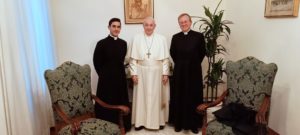
During the very cordial meeting, they recalled the origins of the Fraternity in 1988, the Pope expressed that he was very impressed by the approach taken by its founders, their desire to remain faithful to the Roman Pontiff and their trust in the Church. He said that this gesture should be “preserved, protected and encouraged”.
In the course of the audience, the Pope made it clear that institutes such as the Fraternity of St. Peter are not affected by the general provisions of the Motu Proprio Traditionis Custodes, since the use of the ancient liturgical books was at the origin of their existence and is provided for in their constitutions.
The Holy Father subsequently sent a decree signed by him and dated February 11, the day the Fraternity was solemnly consecrated to the Immaculate Heart of Mary, confirming for the members of the Fraternity the right to use the liturgical books in force in 1962, namely: the Missal, the Ritual, the Pontifical and the Roman Breviary.
Grateful to the Holy Father, the members of the Fraternity of St. Peter are in thanksgiving for this confirmation of their mission. They invite all the faithful who feel close to them as a spiritual family to attend or join them in prayer at the Mass tomorrow, on the feast of the Chair of St. Peter, and to pray for the Supreme Pontiff.
Source : www.fssp.org
_______
Statement from the Priestly Fraternity of St. Peter
North American Provincial Headquarters
South Abington, Pennsylvania, February 21, 2022
The North American Province of the Priestly Fraternity of St. Peter is grateful to the Holy Father for this clarification. We also express our gratitude to the ever-glorious Mother of God, to whose Immaculate Heart the entire Fraternity of St. Peter was consecrated on February 11th, the date of the Holy Father’s decree. Finally, we express our gratitude to St. Joseph, Patron of the North American Province.
February 21, 2022

The Wax, the Wick, the Flame
by Fr. William Rock, FSSP
On February 2nd, the 40th and last day of Christmas, Our Lord’s Presentation in the Temple and Our Lady’s Purification are commemorated by the Church’s Liturgy. A unique part of this day’s Liturgy is the Solemn Blessing of Candles performed before Mass. Historically, in the Roman Rite, this Blessing of Candles was one of the three Solemn Blessings given from the Epistle Corner of the Altar with the ministers vested in violet, the other two being the Solemn Blessings of the Ashes and of the Palms.
While candles have a venerable place in the Church’s liturgical life, they are also held in respect because of Whom they symbolize, namely Our Lord Jesus Christ, the “light to the revelation of the Gentiles” (Luk 2:32, from the day’s Gospel). Following the explanation of St. Anselm of Canterbury, (d. A.D. 1109) this article will examine each part of the blessed candles in turn.

According to St. Anselm, the wax of the candle represents the Flesh, the Body, of Our Lord. As the first prayer of the Solemn Blessing states, these candles are composed of “perfect wax” which was created “by the labor of bees.” Traditionally, the body, or at least the greater part of the body, of the candles used in the Mass is made of beeswax.1 This is because, in their hierarchy, the bees who produce wax are female and have a perpetual virginity. This is the nature of bees.2 There is a fittingness that female bees, possessing a perpetual virginity, should produce the wax used in the body of the candle representing Christ for out of the Blessed and Ever Virgin Mary was formed the Sacred Body of Our Lord (Gal 4:43).

Just as the faithful can touch the body of a blessed candle, so too can Our Lord’s Body be touched, for it is a true Body (1 Joh 1:1). Some heretics, called Docetists, denied that Our Lord had a real, human body, claiming that it only appeared to be so.4 Against these, St. John in his First Epistle wrote: “By this is the spirit of God known. Every spirit which confesseth that Jesus Christ is come in the flesh is of God: And every spirit that dissolveth Jesus,” that is, anyone who denies the reality of the Our Lord’s Body, “is not of God. And this is Antichrist, of whom you have heard that he cometh: and he is now already in the world” (4:2-3). In his Second Epistle, St. John warns that “many seducers are gone out into the world who confess not that Jesus Christ is come in the flesh” (1:7).
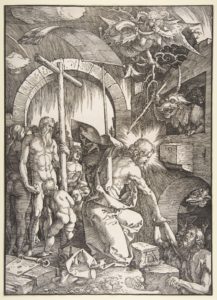
Turning to the wick, St. Anselm sees symbolized the soul of Our Lord. The soul makes the material component of the human person a human body. The wick makes a candle, a candle, and not just a collection of wax. But there were heretics, such as Arius, who denied that Our Lord has a human soul, claiming the Divine Nature took the place of Our Lord’s human soul. The position that Our Lord did not have a human, rational soul was condemned by the Council of Chalcedon (A.D. 451), the Second Council of Constantinople (A.D. 553), and the Council of Vienne (A.D. 1311–1312), all Ecumenical Councils. As the Athanasian Creed (Symbolum Quicumque) states, Our Lord is “perfect God and perfect man, subsisting with a rational soul and human flesh.”5
In the flame, St. Anselm understands Our Lord’s Divinity, for, as St. Paul wrote in the Letter to the Hebrews, quoting Deuteronomy, “our God is a consuming fire” (Heb 12:29/Deu 4:24). As St. Thomas explains in his commentary on this passage, God is not really a fire, for He is a spirit (Joh 4:24). But God is compared to fire
on account of His clarity, because He inhabits light inaccessible (1 Tim 6:16), and because He is supremely active: you have worked all our works in us (Isa 26:12), and He is in a loftier place: the Lord is high above all nations; and His glory above the heavens (Ps 113:4). Furthermore, He cleanses, and as it were, consumes sins; hence, He says that He is a consuming fire: He is like a refining fire, and what follows, and He shall purify the sons of Levi (Mal 3:2, 3); making purgation of sins (Heb 1:3). He also consumes sinners by punishing: but a certain dreadful expectation of judgment, and the rage of a fire which shall consume the adversaries (Heb 10:27).
Therefore, because such things are promised to us: and the light of Israel shall be as a fire, and the holy one thereof as a flame (Isa 10:17); a fire shall go before them and shall burn up enemies round about (Ps 97:3), we should strive to serve and please God.6
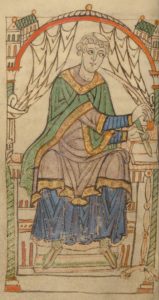
It should be noted that in his explanation of why God is likened to a consuming fire, St. Thomas quotes from the third chapter of the Book of the Prophet Malachias. The first four verses of this chapter, which includes the text quoted by St. Thomas, are used by the Roman Church as the Epistle for the Feast of the Purification.
It is in this manner that St. Anselm invites us to see Our Lord symbolized in blessed candles: “The wax, he says, which is the product of the virginal bee, is the Flesh of our Lord; the wick, which is within, is his Soul; the flame, which burns on the top, is his Divinity.”7
William Rock, FSSP was ordained in the fall of 2019 and is currently assigned to Regina Caeli Parish in Houston, TX.
- See Matters Liturgical [1959], 154.
- About Honey Bees – Types, Races, and Anatomy from the University of Arkansas System, Division of Agricultural.
- Ott, Ludwig, Fundamentals of Catholic Dogma. Baronius Press, 2018, p. 155.
- Ibid., p. 152.
- Ibid., pp. 153-154.
- St. Thomas Aquinas’ Commentary on Hebrews, 725.
- Prosper, Guéranger. The Liturgical Year – Volume III – Christmas, Book II. Fitzwilliam: Loreto Publications, 2000, p. 474.
February 8, 2022

Preserve the Latin Mass Petition
We are happy to support an online petition in favor of the Traditional Latin Mass and Sacraments.
This petition to the Holy Father is respectful and charitable in tone and will no doubt be seen by many bishops, priests, and laity from around the world. We encourage you to go the website to sign the petition. To do more, you can ask ten of your friends, family members, and fellow parishioners to do the same!
The website may be found here: https://preservethelatinmass.org/
February 4, 2022

Message from the Confraternity of St. Peter Chaplain
Fr. James Fryar, English-speaking chaplain of the Confraternity of St. Peter, passes along this letter from the Confraternity’s General Chaplain, Fr. Stefan Reiner. It concerns the upcoming Marian consecration of the FSSP priests, and we encourage the members of the Confraternity especially to participate in this great initiative of prayer. The Novena begins on Candlemas, February 2nd, and ends with the Consecration itself on February 11th.–ed.
Dear Chaplains of the Confraternity,
With this short message I would like to address you regarding the upcoming novena and Marian consecration. Please do not forget to invite your members of the Confraternity especially to this novena and Marian consecration. I have received quite a few letters assuring me of personal prayers and offering to do everything possible so that the Fraternity may emerge strengthened from these difficulties. We should therefore invite in a special way the members of the Confraternity who, along with the FSSP confreres, belong to the closest family circle of the Fraternity, to make this novena and consecration with us.
Therefore, it would not be bad to put a few explanations about the Marian consecration in general or at least the text of the novena and consecration on your local homepage or to refer to the texts of the general homepage of the Fraternity:
Chers chapelains de la Confraternité,
Par ce bref message, je souhaite m’adresser à vous concernant la prochaine neuvaine et la consécration mariale. N’oubliez pas d’inviter tout particulièrement les membres de la Confraternité à cette neuvaine et à la consécration. J’ai reçu de nombreuses lettres de personnes qui m’ont assuré de leur prière personnelle et qui se sont proposées de faire tout ce qui est en leur pouvoir pour que la Confraternité sorte renforcée de ces difficultés. Nous devrions donc inviter tout particulièrement les membres de la Confraternité qui, avec les confrères de la FSSP, font partie du cercle familial le plus proche de la Fraternité, à accomplir avec nous cette neuvaine et cette consécration.
Il ne serait donc pas mauvais de mettre quelques explications sur la consécration mariale en général ou au moins le texte de la neuvaine et de la consécration sur votre site local ou de renvoyer aux textes du site général de la Fraternité :
In Christo,
P. Stefan Reiner
January 31, 2022

A Greek Start to the New Year
by Fr. William Rock, FSSP
The Roman Liturgy has never been afraid to borrow from other Apostolic Liturgical traditions in order to enrich her own. Such a borrowing occurs on the Octave Day of Christmas, January 1st, where the Benedictus Antiphon at Lauds is extracted from a hymn of the Greek Church which is sung on December 26th, a day the Greeks consecrate to the celebration of the Blessed Virgin Mary. The Latin of this Antiphon is as follows:
Mirábile mystérium declarátur hódie: innovántur natúræ, Deus homo factus est: id quod fuit permánsit, et quod non erat assúmpsit; non commixtiónem passus, neque divisiónem.
Which can be translated as:
An admirable mystery is this day revealed: the two Natures are united in a new way, God is made Man: He remained what He was, and He assumed what He was not, suffering neither confusion nor division.1
The subject matter of this Antiphon is one of the central mysteries of the Christian Faith and a focus of the Christmas season: the Incarnation. Unfortunately, various heresies have arisen over the course of the history of Christianity regarding this truth. Succinctly do the various parts of the Antiphon declare the Catholic and Apostolic Faith on the matter. Each will be treated in turn.
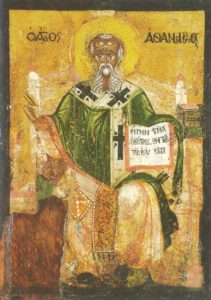
“The two Natures are united in a new way” – Prior to the Incarnation, the only union of the Divine and Human Natures, the two natures referred to by this portion of Antiphon, was when God brought those who believed in Him into a State of Sanctifying Grace, making them “partakers of the Divine Nature” (2 Pet 1:4).2 But, even though a man thus sanctified participated in the Divine Life and was elevated supernaturally, he still remained a human person, he still only possessed human nature. An elevated human nature to be sure, one united to and participating in the Divine Nature, but still only a human nature. In the case of Our Lord, the unity between His Divine and Human Natures was something completely new and unique to Him. He was not a Divine Person participating in human nature, nor was He a human person participating in the Divine Nature – as is possibly the case for all human persons. Rather, in the case of the Our Lord, the Divine and Human Natures were united personally. He is One Person in Two Natures. He is both God and Man.
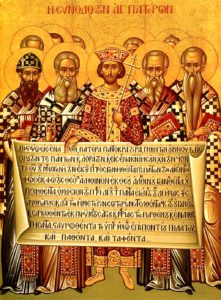
“God is made man” – The Arian heresy claimed that “the Word (Logos) does not exist from all eternity. He is not generated from the Father, but is a creature of the Father, created by Him from nothing before all other creatures.”3 The Arians would hold, then, that the Word which was made man was only a creature and not God. Contrary to this, the First Ecumenical Council of Nicaea (A.D. 325) taught that the One Who became Incarnate was “God from God, light from light, true God from true God…consubstantial with the Father”4 and the Creed Quicumque Vult (also known as the Athanasian Creed) declares the Son, the Word, to be “uncreated,” “eternal,” and that the “Son is God,”5 just as the Father is. This portion of the Antiphon excludes the Arian position that a creature, even the greatest of creatures, was made man by declaring that “God,” and nothing other than God, “is made man.” “God” meaning here, of course, the Person of the Son and “man” meaning, as explained in the just mentioned Creed, “perfect man, consisting of a rational soul and a human body.”6
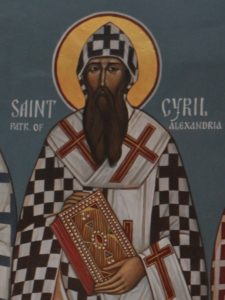
“He remained what He was” – It is tempting to think that when the Son became Man, He underwent some sort of change, with something either being added to or taken away from His Divine Nature which allowed for its union with His Human Nature. But the Council of Nicaea anathemized in its Creed the position that the Son is “changeable or mutable,”7 for the Divine Nature is incapable of change. In the same vein, the Fathers of the Ecumenical Council of Ephesus (A.D. 431) proclaimed, “We do not say that the nature of the Word was changed” in the Incarnation (The Epistle of Cyril to Nestorius).8 And so, in the Incarnation, the Son remained what He was. His Divine Nature did not undergo any change whatsoever nor did it somehow suffer loss or a lessening in the Incarnation.
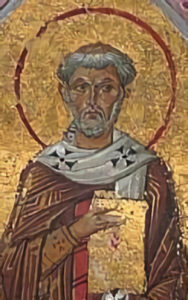
“He assumed what He was not” – While the Son, co-equal and co-eternal with the Father, was, is, and always will be God, in the Incarnation, He became man. He, being God and remaining God, became what He was not: Man. As the Creed Quicumque Vult explains, the Incarnation occurred “not by the conversion of the Divinity into a human body [which would be a change of the Divinity], but by the assumption of the humanity in the Godhead.”9 That the Word assumed a Human Nature is the language of the Ecumenical Council of Chalcedon (A.D. 451) and The Tome of St. Leo (A.D. 499).10
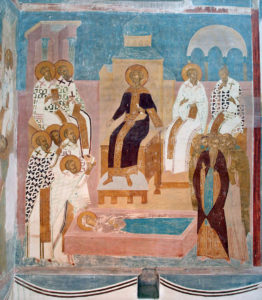
“Suffering neither confusion” – The heresy of Monophysitism claimed that Christ is One Person and one nature. Some Monotheists “assumed a confusion or mixture of the Two Natures into one new third nature.”11 Contrary to this position, the Council of Chalcedon defined: “that one and the same Christ, the Son, the Lord, the Only-begotten is to be recognized in two natures without confusion…The distinction between the natures was never abolished by their union but rather the character proper to each of the two natures was preserved as they came together.”12 The One Person of the Son is preserved as well as the integrity of both the Divine and the Human Nature – for Our Lord is truly God and truly man, not some strange third thing.
“Nor division” – While the Monophysites combined the two Natures of Christ into one, those who followed the Nestorian heresy divide the Two Natures into two persons who are united morally. Nestorianism was condemned by the early Ecumenical Councils of Ephesus and Chalcedon. The Council of Chalcedon “declared that the two natures of Christ are joined ‘in one Person…’”13 To partially fill in the ellipse from the preceding paragraph, the same Council taught “that one and the same Christ, the Son, the Lord, the Only-begotten is to be recognized in two natures without confusion…without division or separation.”
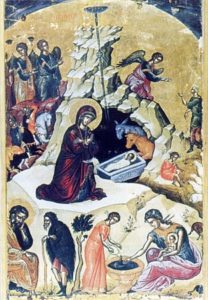
And thus, in only a few phrases, the Roman Benedictus Antiphon for the Feast of the Circumcision summarizes the main teachings of the Catholic Church regarding the Incarnation. By the prayers of her liturgy, the Church protects and declares the true faith.
Pondering all of what has just been said in our hearts, we clearly see that the opening of the Antiphon rings true, “an admirable mystery is this day revealed!”
William Rock, FSSP was ordained in the fall of 2019 and is currently assigned to Regina Caeli Parish in Houston, TX.
1. Prosper, Guéranger. The Liturgical Year – Volume II – Christmas, Book I. Fitzwilliam: Loreto Publications, 2000, p. 388. The antiphon can be variously translated. The Divinum Officium Project provides the following translation: “This day is set forth a wonderful mystery, a new thing hath been created in the earth: God is made man. That which He was, He remaineth; and that which He was not, He taketh; suffering therein neither confusion nor division.” For the purpose of this article, however, the translation from The Liturgical Year was used.
2. See Ott, Ludwig, Fundamentals of Catholic Dogma. Baronius Press, 2018, p. 276.
3. Ibid., p. 57.
4. Denzinger, Henry, The Sources of Catholic Dogma [1954]. Fitzwilliam: Loreto Publications, 2010, §54.
5. Ibid., §§39-40.
6. Ibid.
7. Ibid., §54.
8. Ibid., §111a.
9. Ibid., §§39-40.
10. Ibid., §143.
11. Ott, p. 159.
12. Ibid.
13. Ibid., p. 157.
January 18, 2022

OLG Seminary featured in Liturgical Arts Journal
Earlier this week, Liturgical Arts Journal ran a wonderfully extensive article on Our Lady of Guadalupe Seminary in Denton Nebraska, featuring dozens of photographs of the interior and exterior and lots of great information on the historical foundation of the seminary, its architecture, and its academic and spiritual programs.
Read all about it on LAJ’s site here:
https://www.liturgicalartsjournal.com/2022/01/our-lady-of-guadalupe-fssp-seminary-in.html
January 14, 2022



